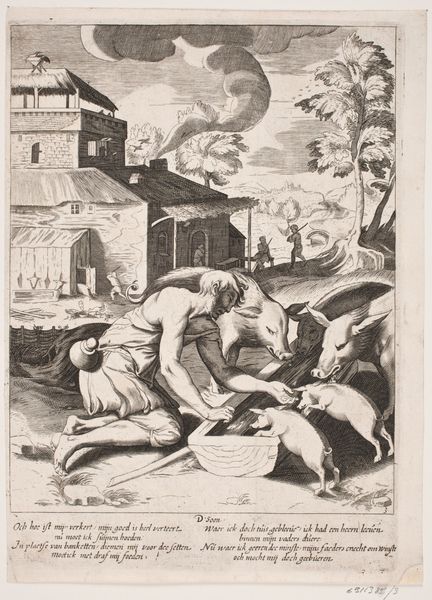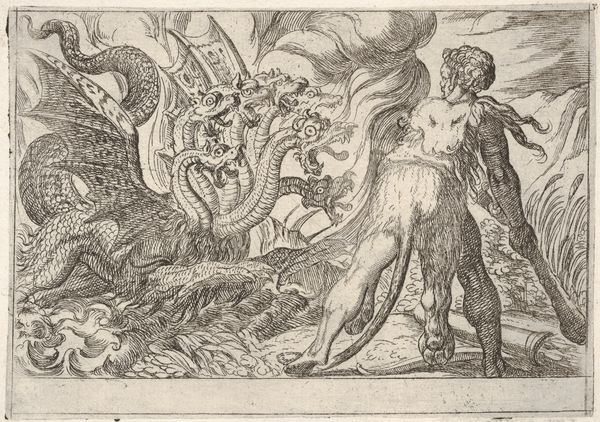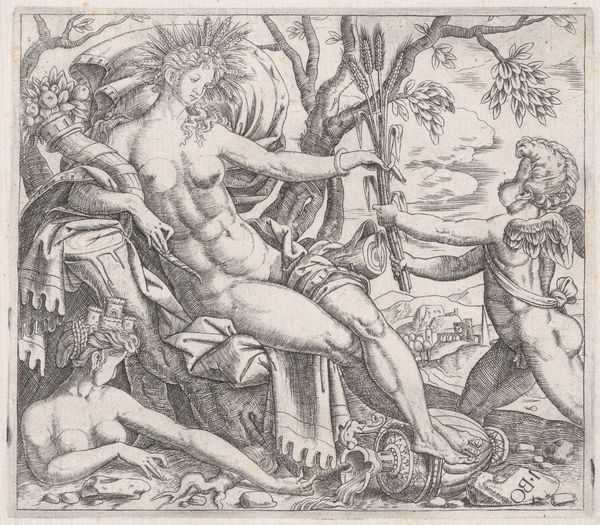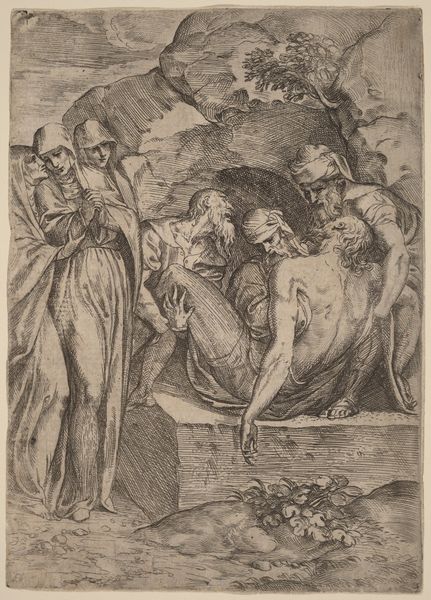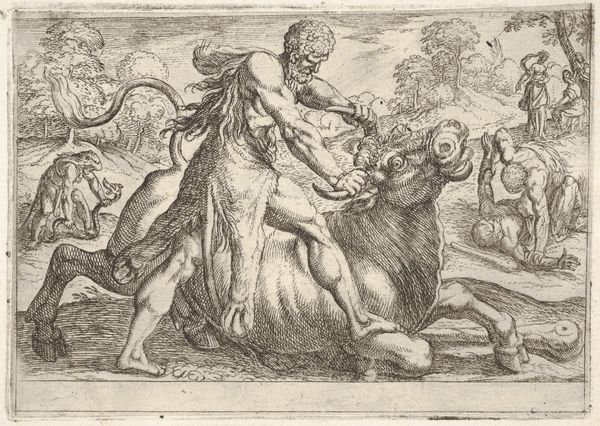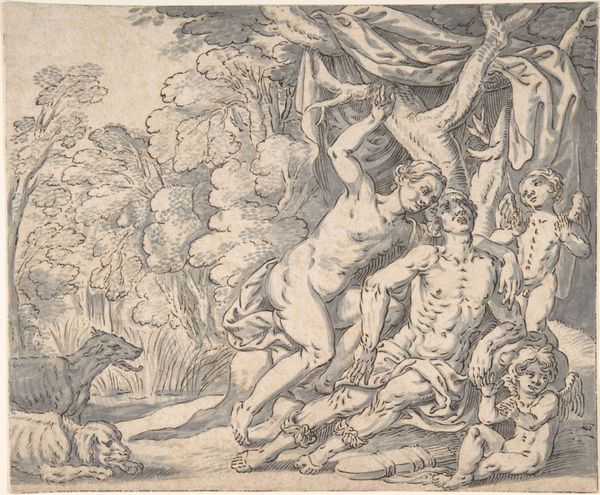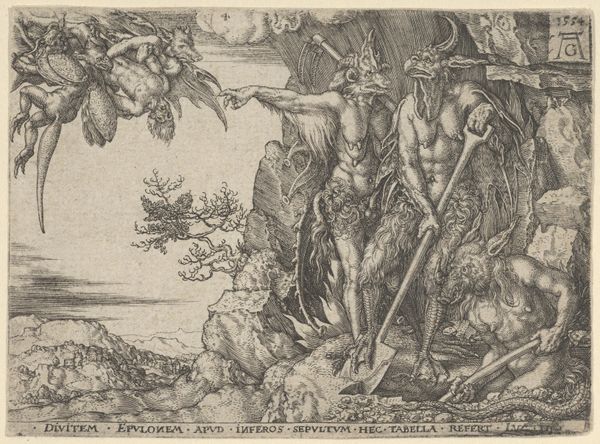
drawing, print, engraving
#
portrait
#
drawing
#
narrative-art
# print
#
landscape
#
figuration
#
11_renaissance
#
pencil drawing
#
italian-renaissance
#
engraving
Dimensions: 3 1/8 x 4 5/8 in. (8.0 x 11.8 cm)
Copyright: Public Domain
Editor: Here we have Agostino Veneziano's "Diogenes," created sometime between 1510 and 1520. It's an engraving, which gives it a delicate, linear quality. The figure seems both weary and contemplative. What do you make of this piece? Curator: I'm struck by the tension between the subject matter – Diogenes, the philosopher who rejected material possessions – and the labor involved in creating this intricate engraving. Think about the copperplate, the tools, the meticulous work needed for each print. Editor: That’s interesting. I hadn’t considered the contradiction inherent in depicting such a subject through such a laborious and costly process. Curator: Exactly. And who was this print for? Wealthy patrons, most likely. The very people Diogenes would have scorned! This raises questions about the consumption of art itself, doesn’t it? Was this a commentary, a status symbol, or both? Editor: So, the material reality of its production and the intended audience directly challenge the philosophical ideals represented. Curator: Precisely. Also, consider the black lines creating light and shadow; their intentional organization results in this beautiful work. That labor and the subsequent act of distribution add another layer to the print. Where were prints like these made, and how might have distribution have influenced society at that time? Editor: It really shifts the way I see it, thinking about not just the image, but the entire production and consumption chain. It also forces one to reflect on why this image might have been so important that it be reproduced as a print, and spread across Europe. Thank you. Curator: Indeed, looking at the labor and the social context is key to unlocking deeper meanings within the image.
Comments
No comments
Be the first to comment and join the conversation on the ultimate creative platform.


